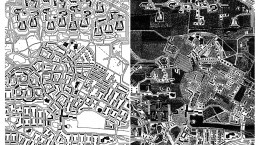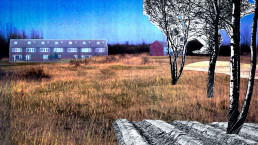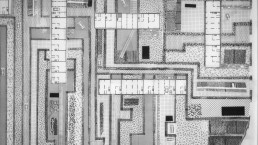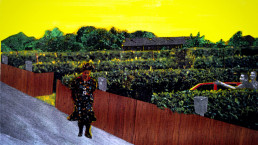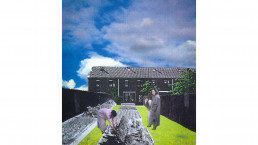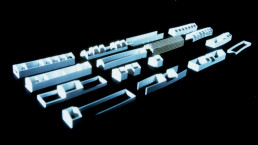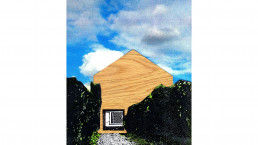LelyLand
LELYLAND proposes to rethink the idea of the contemporary city based on a real case. The research and Master plan proposal raises the possibility of daring to DECREASE in order to REGENERATE, offering less aggressive, lighter, and symbiotic urbanism.
This project investigates the future of the Dutch city of Lelystad. This city was planned from scratch in the 1950s, when very strong migratory movements to the west of the country were expected. According to the urban planners of the time, Lelystad, at the end of the 20th century, and after the creation of the new polder Markerwaard, would become a city of 100,000 inhabitants and the capital of the province of Flevoland. However, the new polder was never built, Almere (a neighbouring city) became the recipient of the new inhabitants, as it was closer to Amsterdam, and those with a lower purchasing power, who could not reach the neighbouring cities’ standard of living, landed in Lelystad. Over time and in this context, an astonishing number of the pioneers of the new city abandoned it, and moved to the big cities of Noord Holland, and consequently, Lelystad entered a cycle of decline and emptying.
Faced with this situation, the research, based on documentation tracing techniques, field studies, interviews with individual, collective, and institutional actors related to the object of analysis and the examination of data on migratory movements, proposed an innovative urban regeneration strategy. This approach, focused on avoiding the multi-million-dollar investments needed to increase or maintain the population, proposed the acceptance of population abandonment as an opportunity for change and improvement for the city.
In this sense, the study used the abandonment of Lelystad as a starting point for a new urban strategy focused on degrowth rather than growth as the basis for transformation. This degrowth, which at that time only produced more and more empty dwellings and less population for the existing services, infrastructures, and facilities of post-war dutch urban planning, had to be studied and redirected.
The findings of this research lead to a radical proposal to «dilute» Lelystad; by repurposing the excess of public space; by recovering abandoned buildings to enlarge others; or by transforming existing volumes into more spacious and quality housing. The proposal argues for a light and green Lelystad, where nature is the protagonist, in contrast to the excessive densification of the rest of the neighbouring cities.
To turn Lelystad into a city capable of dialogue with the natural environment, giving importance to biodiversity and the recovery of water resources in order to regenerate it as a green city, were the objectives of the Master Plan presented. The final proposal prepared the city for symbiotic regeneration between the urban and the natural, in order to offer an oasis for all those fleeing the densification of new neighbourhoods; a Suncity for retirees; a dream for those who can work at home or remotely and even the promised land for eco-urban farms.
This research offered Lelystad the opportunity to self-regenerate in a unique place, capable of offering a balance between the built and the natural environment.
Name:
LELYLAND
Typology:
Urban planning / R&D
Location:
Lelystad, The Netherland
Year:
1994-1995
Team:
Tom Mossel, Esther Gonzalez Aurignac
Research:
Urban Planning and Regeneration
Institution:
TU Delft


